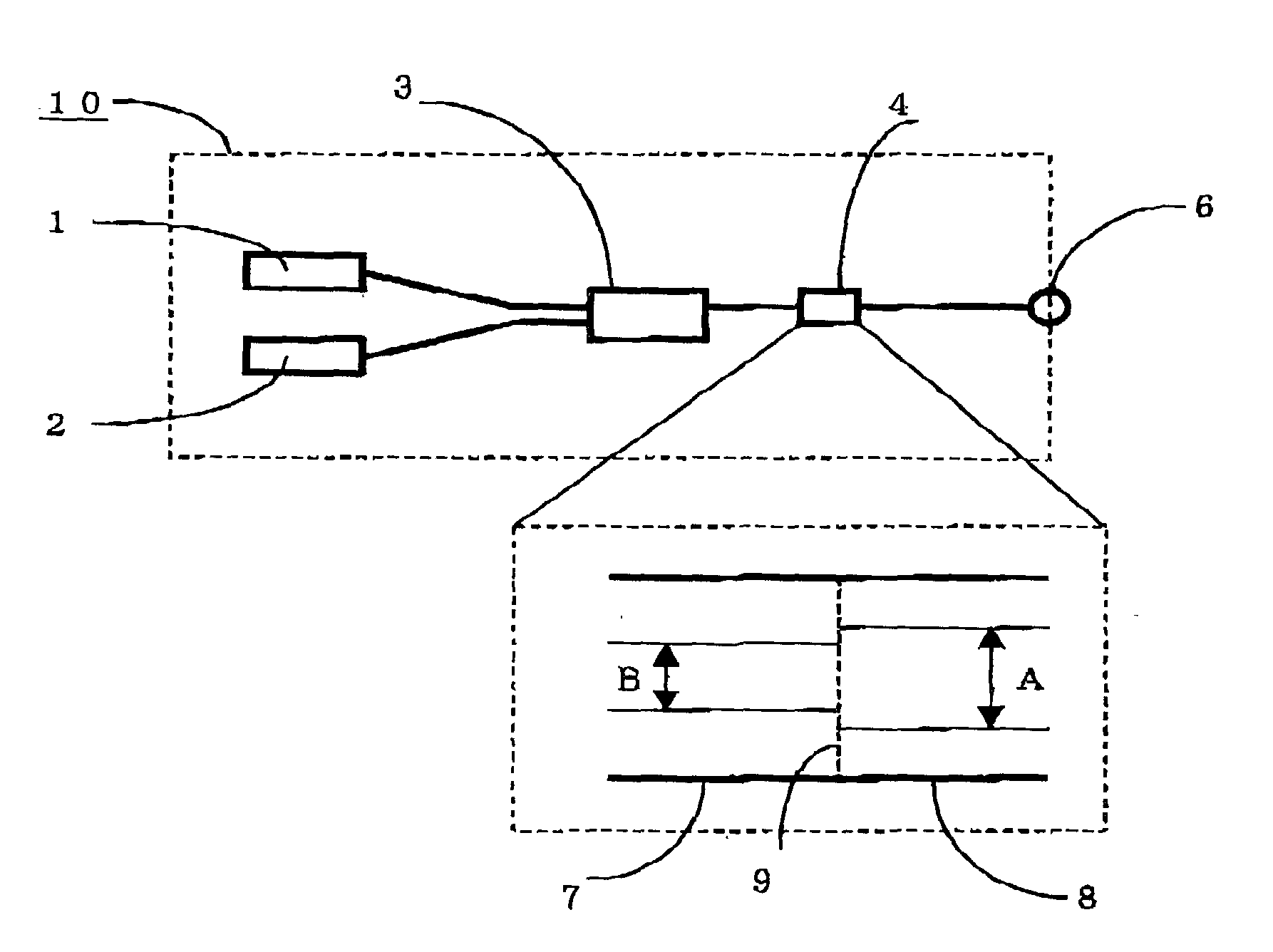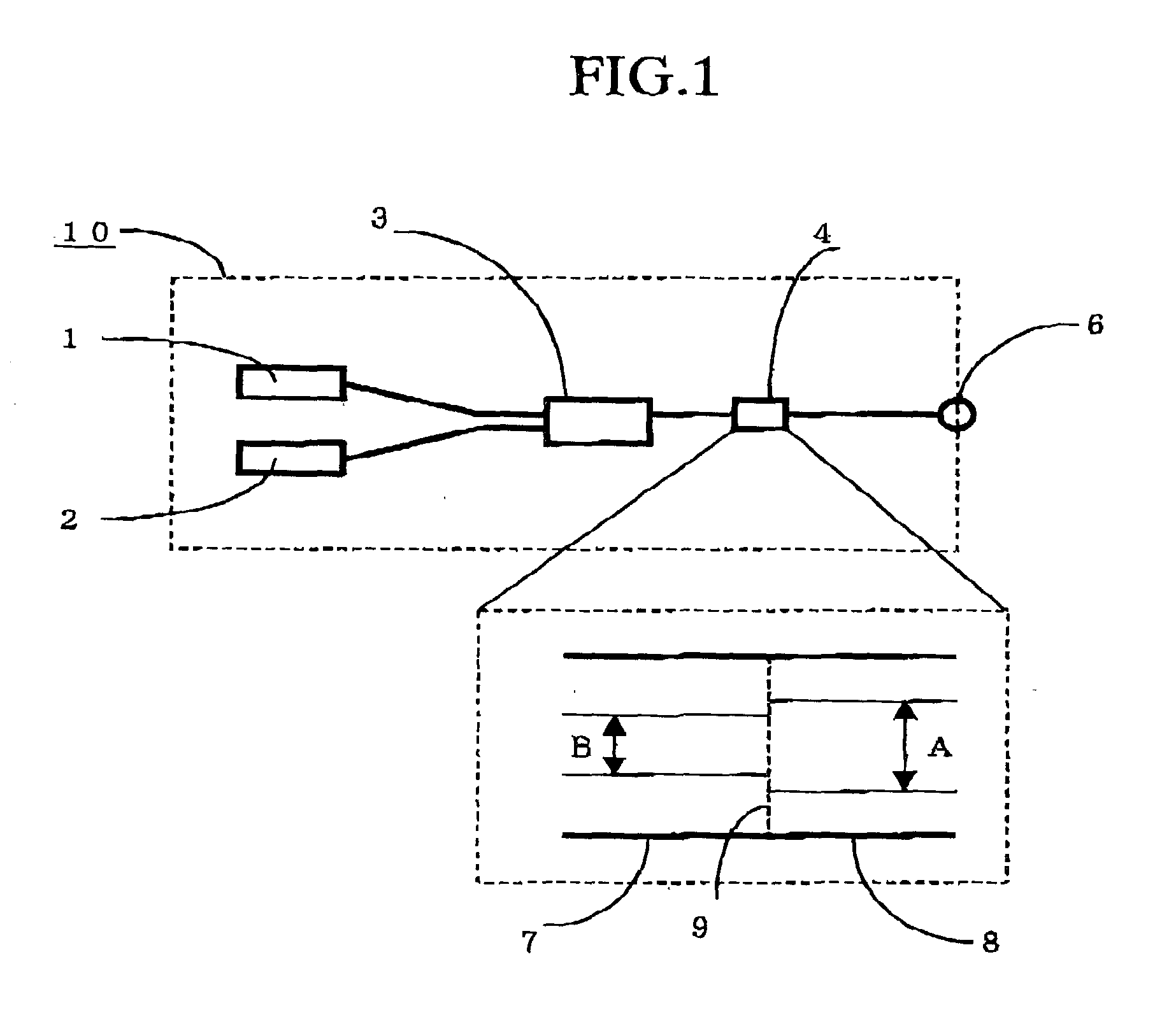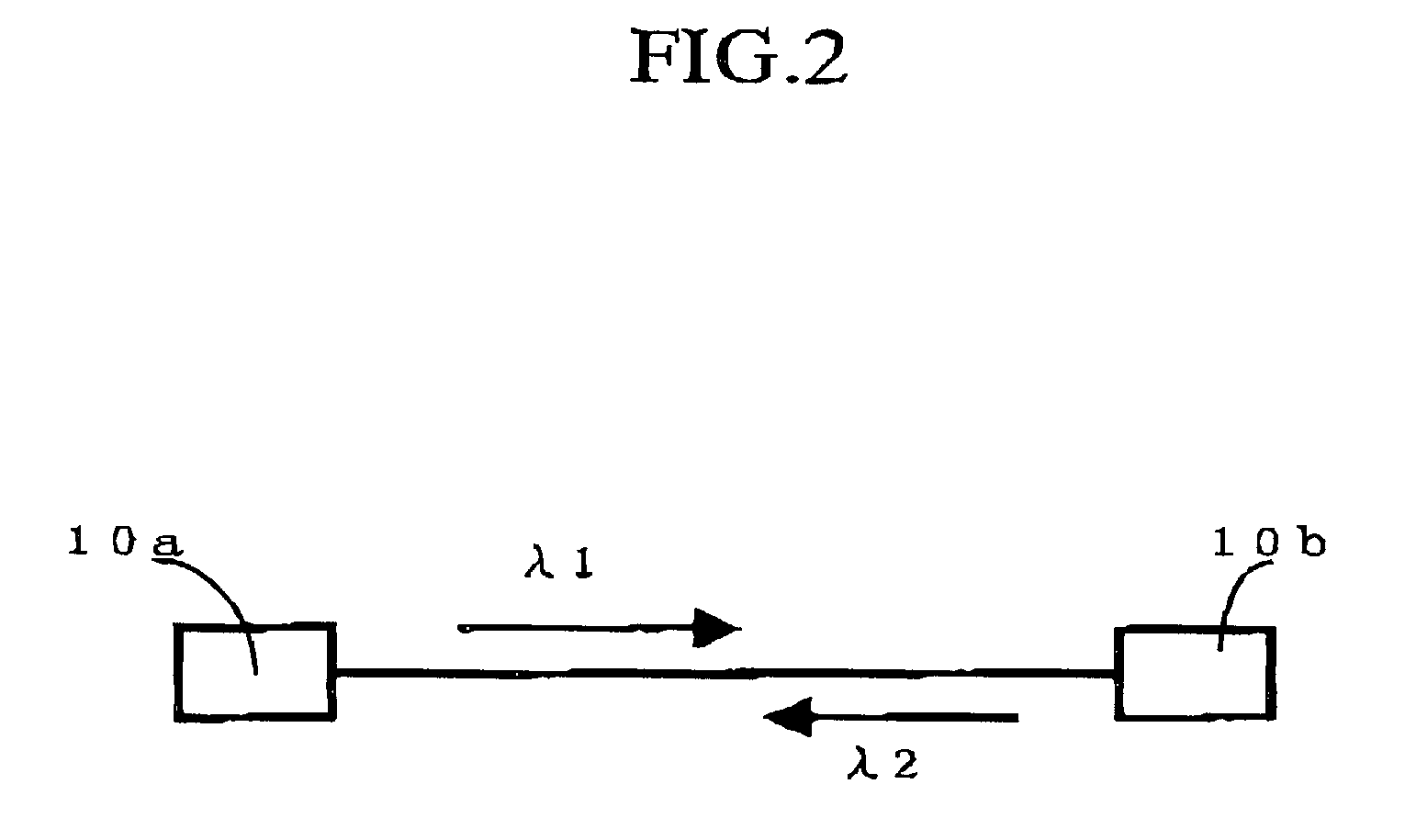Mode sensitive filter and optical transmitter/receiver
- Summary
- Abstract
- Description
- Claims
- Application Information
AI Technical Summary
Benefits of technology
Problems solved by technology
Method used
Image
Examples
first embodiment
[0017] FIG. 1 shows the basis construction of a optical transmitter / receiver according to the present invention. An optical transmitter / receiver 10 of the present invention comprises a semiconductor laser 1, a photodiode 2, a WDM (wavelength division multiplexing) optical fiber coupler 3, and a mode sensitive filter 4. The semiconductor laser 1 employs an AlGaAs laser grown on a GaAs substrate. The photodiode 2 is a light-receiving element that comprises a Si-Pin photodiode grown on a Si substrate. The mode sensitive filter 4 is configured such that an optical fiber 7 having a core diameters B of 6 .mu.m and an optical fiber 8 having a core diameter A of 10 .mu.m are coaxially fusion spliced together at an interface 9. Light having a wavelength 0.78 .mu.m (or 0.85 .mu.m) travels in a single mode on the optical fiber 7 end of the mode sensitive filter 4. This short wavelength from the optical fiber 7 end is coupled with the lowest order mode on the optical fiber 8 end.
[0018] While li...
second embodiment
[0028] [SECOND EMBODIMENT]
[0029] FIG. 3 is a plan view showing the construction of an optical transmitter / receiver according to a second embodiment of the present invention. The optical transmitter / receiver of the present embodiment is configured of a WDM coupler 14 disposed on a planar optical waveguide substrate 11. A mode sensitive filter 13 is formed at the junction between the planar optical waveguide substrate 11 and an optical fiber 12. The semiconductor laser 1 and photodiode 2 are the same as those in the first embodiment shown in FIG. 1.
[0030] The mode sensitive filter 13 of the present embodiment is configured such that a waveguide 15 formed on the planar optical waveguide substrate 11 has a small cross-sectional area in order to generate a single mode on the short wavelength end. Since the optical fiber 12 is a normal single-mode optical fiber (an optical fiber having a single transmission mode of a long wavelength), a plurality of transmission modes exists in the optica...
PUM
 Login to View More
Login to View More Abstract
Description
Claims
Application Information
 Login to View More
Login to View More - R&D
- Intellectual Property
- Life Sciences
- Materials
- Tech Scout
- Unparalleled Data Quality
- Higher Quality Content
- 60% Fewer Hallucinations
Browse by: Latest US Patents, China's latest patents, Technical Efficacy Thesaurus, Application Domain, Technology Topic, Popular Technical Reports.
© 2025 PatSnap. All rights reserved.Legal|Privacy policy|Modern Slavery Act Transparency Statement|Sitemap|About US| Contact US: help@patsnap.com



